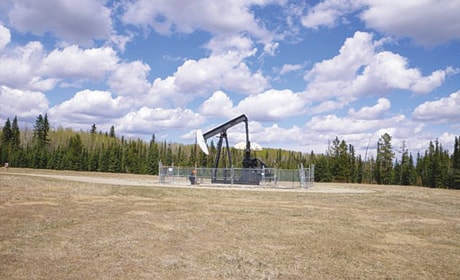A faithful reader with a long memory of this column’s interest in Alberta’s public lands boondoggles sends in a hot tip and, for very good reason, requests anonymity.
The reader submits a copy of a recent ad in a tabloid newspaper circulating in Central Alberta:
“Grazing leases for sale: Licensed for 166 AUMs. 640 acres. Near Cow Lake. Asking $79,500. 480 acre lease licensed for 122 AUMs SOLD. 6 section grazing lease licensed for 597 AUMs. Asking $498,000 . . .” There followed contact information for the real estate agent handling the sale.
The reader echoes questions I have heard too many times before, first asking what is wrong here, and where is all the money in grazing leases that might explain someone fronting half a million dollars just to lease land he’ll never own from someone else, who also doesn’t own it. The final comment suggests there is something radically wrong in this whole scenario.
There is, just as there has always been, something rotten in the whole grazing lease racket, ever since Sir John A. started it by lavishing cheap leases on Crown, or public land, to reward loyalist Conservative fat cat gentlemen ranchers.
To put this latest aspect of private sales in context we must try to understand the concept of the AUM, the number on which the Alberta government bases the paltry annual rental for grazing leases on Alberta public land. AUM means the number of cow-calf pairs you can run for one month on that lease, or divide by five for the whole five-month season.
My rancher friends all tell me they can’t afford to eat beef, considering the huge current difference between what they are paid per pound and what they are asked to pay per pound in the stores. Can a farmer-rancher possibly afford to pay half a million dollars for the right to graze 120 cow-calf pairs for five months per year on six sections of public land?
Certainly I didn’t think so, and suspected the answer might be found in another aspect of the grazing lease boondoggle whereby, somehow, accidentally some oil and gas people tell me, the holders of government grazing leases collect all the payments made by resource developers for alleged surface disturbances to the land caused by oil, gas, mining development, etc. It is impossible, it seems, for us, the people, the owners of Alberta’s public land, to find out how much that has cost us, but I estimate multi millions of dollars over the past three decades.
But no, it seems the only surface rights revenues from the grazing leases in the ad are $4,000 per year from the big one, the six section lease. So, in these cases, there seems really, to be no answer to why someone would think he could ask, and perhaps find someone else who would pay these kinds of prices for the private “sale” — transfer of a grazing lease on public land.
But the bigger question is why, if mere leases on public land are worth this kind of money, are we, the owners of the land, not receiving it? Our government, through whatever minister is for the time-being administering the at-least 50 per cent of Alberta that is public land, is the trustee for us all of that land and obliged to see that it is properly administered for the benefit of all Albertans, not just a handful of ranchers and farmers.
No private landowner in his right mind would permit the lessee of his land to keep the surface disturbance rights money, nor would he permit the lessee to sell the lease to someone else for big bucks. If big money is to be made from his land, the prudent private landowner is the one who is going to make it. If surface damage is caused to the land by oil, gas, etc. activity, then the private landowner might compensate his lessee out of the surface rights payments for the actual amount of loss of the lessee to his grazing, cropping, etc. operations.
For example, the Eastern Irrigation District, based in Brooks, receives millions of dollars annually from the oil and gas surface disturbance payments on the 600,000 or so acres of land the EID owns. Of those payments, the EID turns over a very small amount to people, groups, etc. who lease some of those lands for grazing, based on a written tariff of how much money for what area of land actually taken out of production.
I’ve written it before, and I’ll write it again: it is long past time for Alberta’s auditor general to look into the whole grazing lease mess in Alberta and tell us how much it has cost Albertans over the years the owners in common of our public land, how that loss has affected the management of our public lands, including the beds and shores of our rivers, lakes and streams.
Bob Scammell is an award-winning outdoors writer living in Red Deer.
